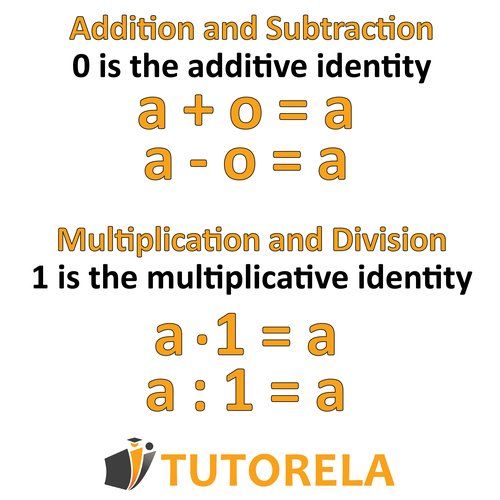In mathematics, a neutral element is an element that does not alter the rest of the numbers when we perform an operation with it.
Neutral Element - Addition
With addition, is considered a neutral element because it does not modify the number to which it is added.
Neutral Element - Multiplication
In multiplication, is considered a neutral element because it does not affect the result.
Neutral Element - Subtraction and Division
The neutral element in subtraction is , while in division it is .
